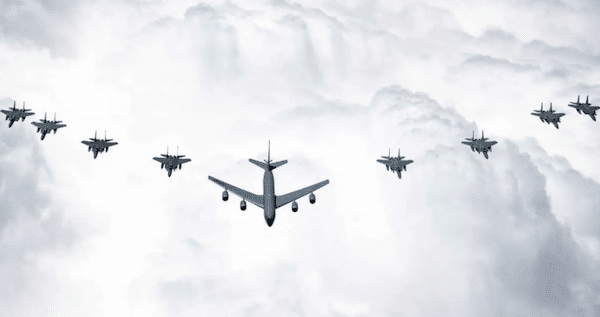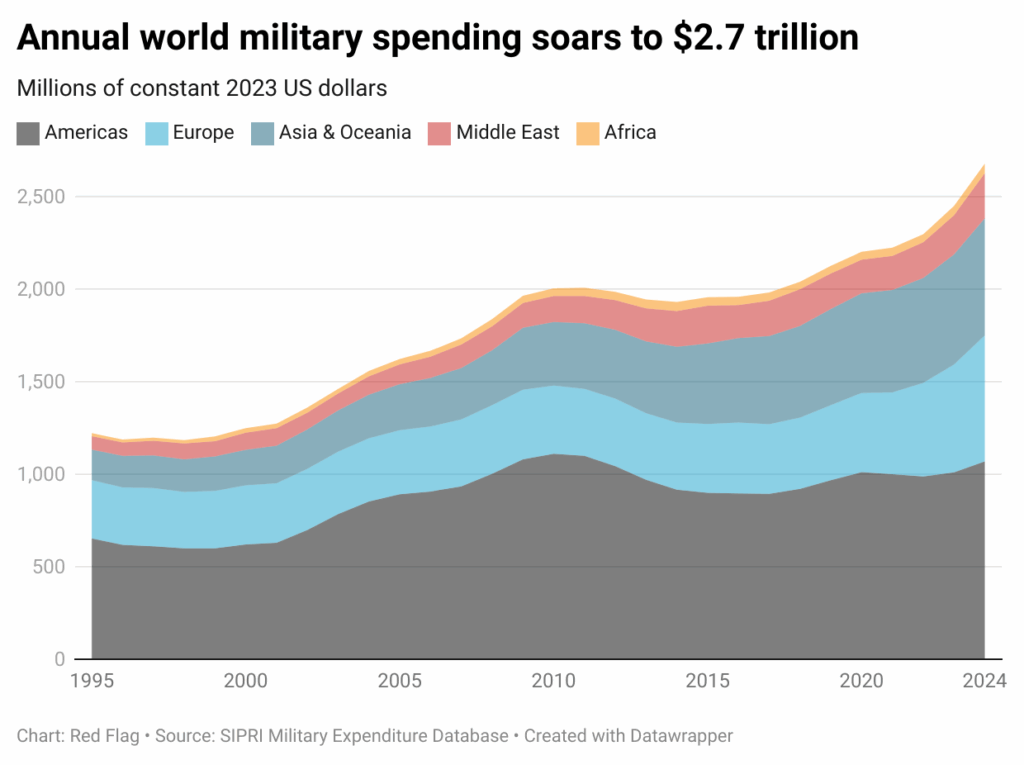Danica Rachel
Global military
spending is skyrocketing. The total spent on waging or preparing for war in
2024 was about US$2.7 trillion, 9.4 percent more in real terms than in 2023,
according to the latest Stockholm International Peace Research Institute
estimates. This is the biggest year-on-year increase since the institute began
tracking world military expenditure in 1988.

The United
States remains the world’s biggest spender, outlaying US$997 billion and
accounting for 37 percent of the global total. China was a distant second,
spending an estimated US$314 billion. The top five spenders (including Russia,
Germany and India) account for 60 percent of the global total. The top fifteen
countries, Australia included, all increased military spending and made up
four-fifths of the global total, spending a combined US$2.1 trillion in 2024.
The spending
growth is part of a longer-term trend. Last year was the tenth consecutive year
of increases in global military expenditures, the total being 37 percent higher
in real terms than in 2015.

While U.S.
military spending is more than triple that of China, Beijing’s ten-year real
increase is nearly 60 percent, about triple America’s 19 percent. As tensions
increase between the two biggest powers, other countries are marching in
lockstep to hold their ground.
This includes
Australia, where uncompromising allegiance to the U.S. has been central policy
for Labor and Liberal governments for decades. Australian military spending in
2024 was 25 percent higher than in 2015. However, the big increases associated
with obtaining nuclear-powered submarines have yet to be felt. The government
is set to spend hundreds of billions of dollars that should be spent on public
housing, welfare and healthcare.
Europe’s
trajectory is more dramatic. Members of the North Atlantic Treaty Organization
more than doubled their annual military expenditure in the last decade. Among
them is Germany, which in one year has increased its military spending by 28
percent to US$88.5 billion, making it the biggest spender in Western Europe.
These trends
will only continue. And it won’t be the wealthy footing the bill—it’ll come at
the expense of social services and working-class living standards.
Only a fraction
of the money being spent on weaponry would be needed to end world hunger (US$48
billion a year, according to the World Food Program) and provide universal
access to safe drinking water and sanitation to 140 low- and middle-income
countries (US$138 billion a year, according to the United Nations).
But
capitalism’s priorities are elsewhere. British conservative columnist Janan
Ganesh, in a March Financial Times opinion piece titled “Europe must trim its
welfare state to build a warfare state”, put it plainly:
“[T]he welfare state as we have known it must retreat somewhat: not
enough that we will no longer call it by that name, but enough to hurt. It was
never designed for a world in which living to 100 is banal.”
Every dollar
added to the world’s military budgets takes us closer to a potentially
apocalyptic scenario of world war. The working classes of all countris have
nothing to gain from this. The war drive must be resisted.

No comments:
Post a Comment